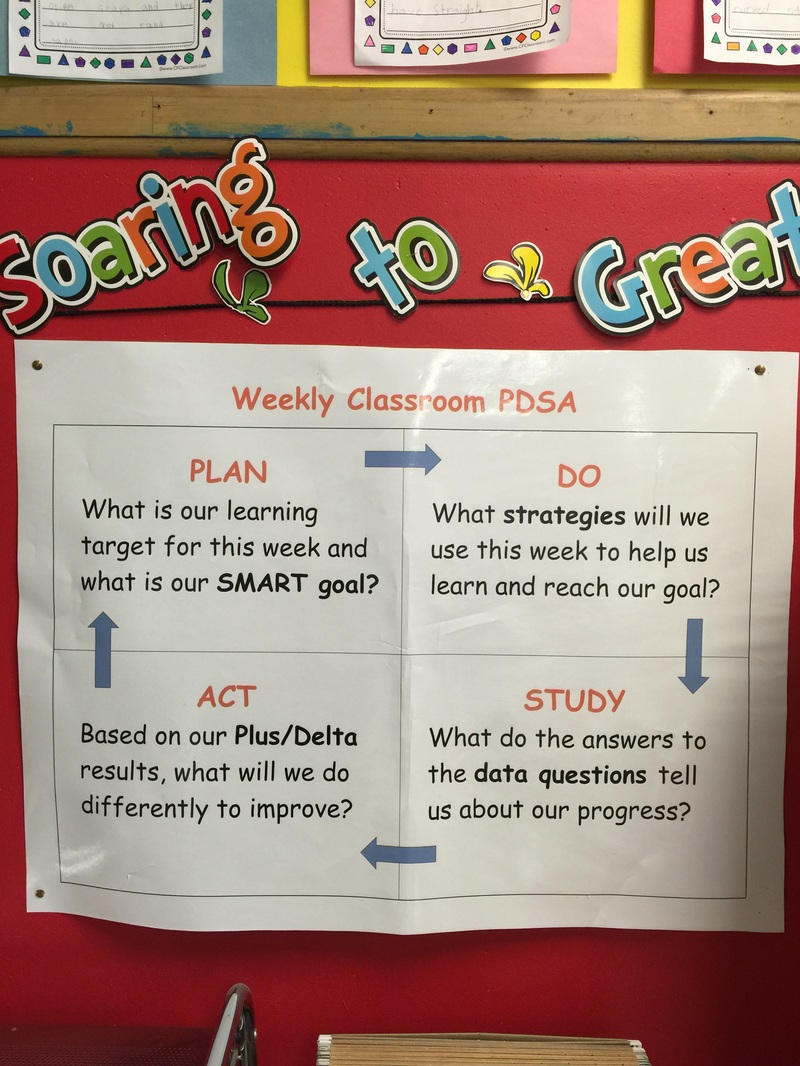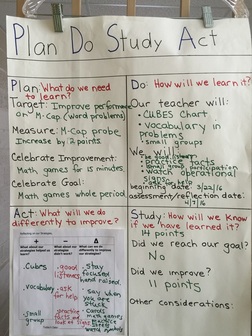PLAN DO STUDY ACT
When a PDSA is used within the classroom, there is an organized structure to stimulate conversation with children about their learning. It focuses on a target or goal that is related to a grade level standard. Information about the learning process is documented when a PDSA is utilized regularly within a classroom. The data helps teachers to know what needs to be taught next. There are four essential components of the process: PLAN, DO, STUDY, ACT.
PLAN: This part of the process is completed with the children to set the target or goal for learning. It is based on data that has been collected and curriculum content that needs to be taught. A statement about when and how the target or goal will be measured is posted. Also included is a section on celebrating partial or complete achievement. This is to acknowledge the success of the students.
DO: This segment is completed with the students prior to the beginning of instruction. It specifies how the class will learn the skill that is identified. To emphasize that learning is a shared obligation, statements are written that explain what teachers and students are going to do to accomplish the target or goal. This information is recorded, along with when the plan begins and ends.
STUDY: Once the assessment that measures performance is administered, students discuss the results with the teacher. Referring back to the target or goal, they determine whether they reached the standard or showed improvement. Since this is completed with the class as a group, conferences with individual students can occur later. If there are considerations that need to be addressed, they are listed to help interpret the results of the data and how to proceed next.
ACT: During the final phase of the process, students complete a Plus, Minus, Delta with the teacher. During this time, students reflect on their learning by identifying what they did well, what interfered with their learning, and what changes would improve their learning in the future.
This process allows students to be actively involved in their own learning. They become responsible and accountable to themselves and to their teachers. Teachers benefit from this process because they gather knowledge about their students that helps to guide their instruction.





